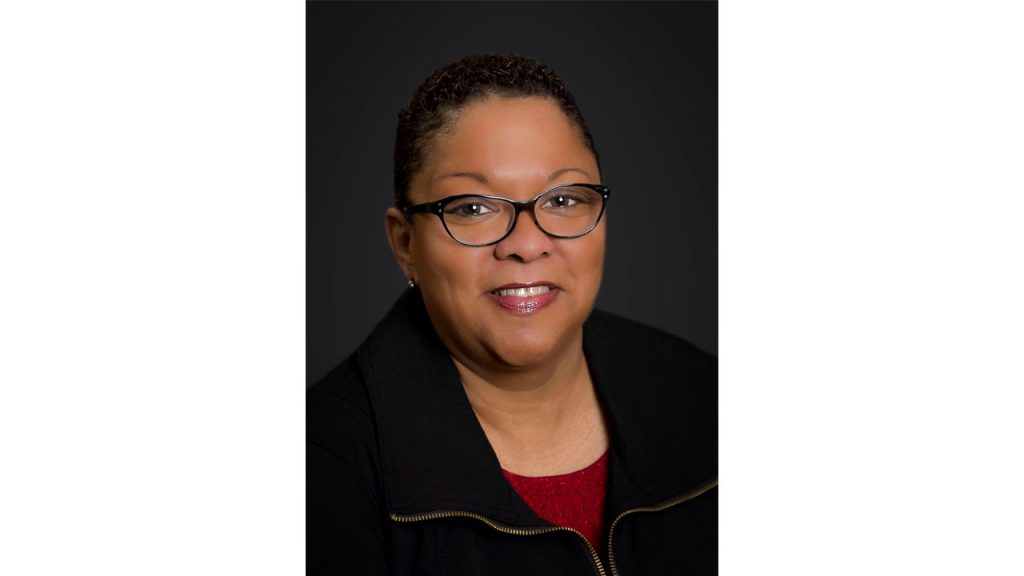Royal Oak Schools’ Diversity, Equity and Inclusion Coordinator Works to Prepare Kids for the Future
The district’s slogan is “Forward Together,” says DEI Coordinator Kimberly Martin. Part of her job is to address the culture within the schools that have led to some high-profile racial incidents in the past.

Royal Oak Schools has had some high-profile racial incidents — students taunting Latino classmates with chants of “Build the Wall” after the election of Donald Trump, a noose left in a student bathroom, reports of students using racial slurs just last month.
This year, the district has a Diversity, Equity and Inclusion Coordinator. Part of Kimberly Martin’s job is to address the culture within the schools that leads to these kinds of incidents.
“We’re trying to prepare the students for the future … And there’s virtually no place that they can go where diversity and inclusion are not going to be part of the conversation.” –Kimberly Martin, Royal Oak Schools
Martin says her work has four focus areas: instruction, student behavior, recruitment and professional development.
She says the district slogan for diversity, equity and inclusion this year is “Forward Together.”
“We’re trying to prepare the students for the future,” Martin says. “So we’re trying to get them not just comfortable with where they are now, but where they’re going to go. And there’s virtually no place that they can go where diversity and inclusion are not going to be part of the conversation.”
Martin says the district’s commitment can be seen throughout Royal Oak Schools. There are DEI committees at some of the elementary schools, she says. Kids serve on some of the committees and get involved in discussions about issues that are important to them.
Critical Race Theory in Schools
Since Martin stepped into the role last spring, the national discussion around how race, discrimination and history are taught has exploded, with critical race theory, or CRT, becoming a target for many parents and activists. School boards across the country and state have faced months of protests from those who say CRT, DEI programs, social justice initiatives and discussions of slavery, Indigenous genocide and Jim Crow don’t belong in schools.
Martin says part of the problem is people are misinformed about what CRT is. She says it was developed by legal academics in the ’70s.
“It just examines the social, cultural and legal issues as they relate to race and racism,” Martin says. “The same thing within the school system. You can’t talk about gaps in education, opportunity gaps, gaps in resources, without including race.”
“Unfortunately, what [anti-CRT protesters] are really saying is they don’t really want to talk about things that make them uncomfortable. But I argue that as a country, we’ve been too comfortable for too long. We need to as a country stop hiding our history, because it’s a part of who we are. It may be ugly, but that’s what we got.”
“We can’t continue to pretend like the way that this country was formed was not done on the backs of marginalized folks.” –Kimberly Martin, Royal Oak Schools
Martin says it’s time to teach not only what actually happened in history but how marginalized people were affected by that history.
Martin says, unlike in some districts, diversity, equity and inclusion work enjoys a lot of support from parents, staff and administration in Royal Oak. But, she says, in many districts there’s a loud minority that makes it hard to see how the whole community feels about this shift in focus.
“Some other districts have parents who are just way out of control with their demands, and what they think that they have a right to,” Martin says. “I will say, that [Royal Oak] is probably about 95% supportive, ready to do the work and looking forward to it and 5% that, for whatever reason, oppose one thing or the other, and are very vocal about it.”
Martin says she believes the country is approaching a point where it’s not possible to hide the history, experiences and voices of marginalized people.
“We can’t continue to pretend like the way that this country was formed was not done on the backs of marginalized folks,” Martin says. “The narrative is that we’re the greatest nation on Earth. But that does not mean that we don’t have bumps and bruises and scars.”
“People don’t want to feel uncomfortable and they don’t want to feel like we’re trying to tell them that they’re guilty for this. No, you are not but you’re a beneficiary.”
That’s why, she says, positions like hers — especially in kindergarten through 12th grade — are vital. So, kids are equipped to treat all of the people they encounter with respect and dignity.
Listen: You can’t talk about educational gaps without addressing race, says Kimberly Martin.
Trusted, accurate, up-to-date.
WDET strives to make our journalism accessible to everyone. As a public media institution, we maintain our journalistic integrity through independent support from readers like you. If you value WDET as your source of news, music and conversation, please make a gift today.
